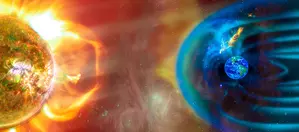
NOAA announces Geomagnetic storms to continue to hit Earth till Sunday night
text_fieldsNew Delhi: As per the US National Oceanic and Atmospheric Administration (NOAA), the strong geomagnetic storms that struck Earth on Friday are predicted to last until Sunday night, causing disruptions to satellite navigation, GPS, and other technology.
The geomagnetic storm was rated as "extreme," or a G5 storm, by NOAA's Space Weather Prediction Centre (SWPC) on Friday. This is the highest classification available.
It's the first G5 storm to hit Earth since 2003 and caused several coronal mass ejections or CMEs.
Besides allowing many skygazers across the globe to see the beautiful northern lights where they usually can’t, it also led to a “major disturbance in Earth's magnetic field, causing radio blackouts, affecting GPA and satellite systems, including Elon Musk’s Starlink.
“Geomagnetic storming of various intensity will continue overnight,” NOAA shared in a post on X.com
“By early Sunday, and into Sunday night the next major coronal mass ejection (CME) - moving at speeds up to 1800 kilometres per second - will begin to slam into the Earth’s magnetic field and reach the outer atmosphere.
“A G4 Watch remains in effect for May 12,” it added.
What is a geomagnetic storm?
A geomagnetic storm is “a disturbance in the Earth’s magnetosphere caused by solar wind activity.” Wind from these storms can cause aurora in the sky, in addition to possible disturbances in satellite communications.
On a scale from G1 to G5, G5 is the strongest level of the geomagnetic storm.
"Widespread voltage control problems and protective system problems can occur," NOAA warned. "Some grid systems may experience complete collapse or blackouts. Transformers may experience damage."
The most recent G4 (severe) storm occurred on March 23, 2024, while the Halloween Storms in October 2003 marked the last G5 (extreme) event.
The G5 storm in October 2003 reportedly caused power outages in Sweden and damaged transformers in South Africa.
With the sun building towards a peak in its 11-year solar activity cycle, expected to occur in 2025, experts noted that geomagnetic storms are going to have an increased presence.
With inputs from IANS























